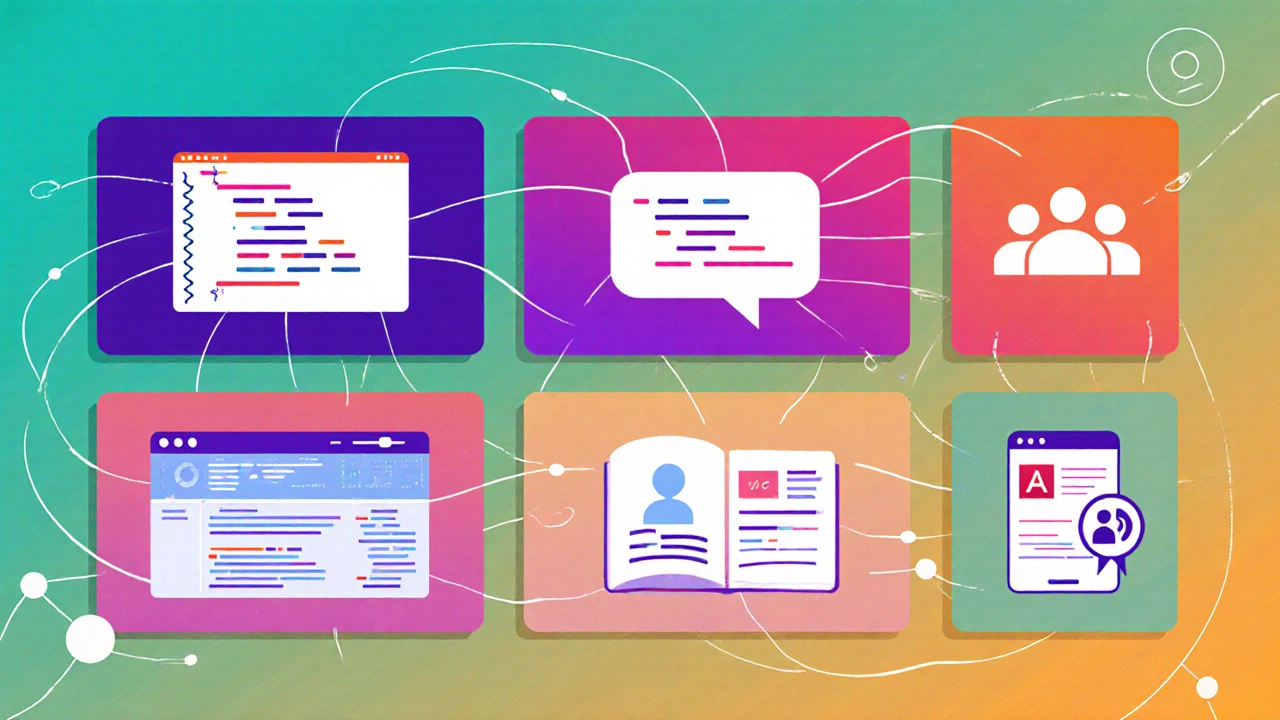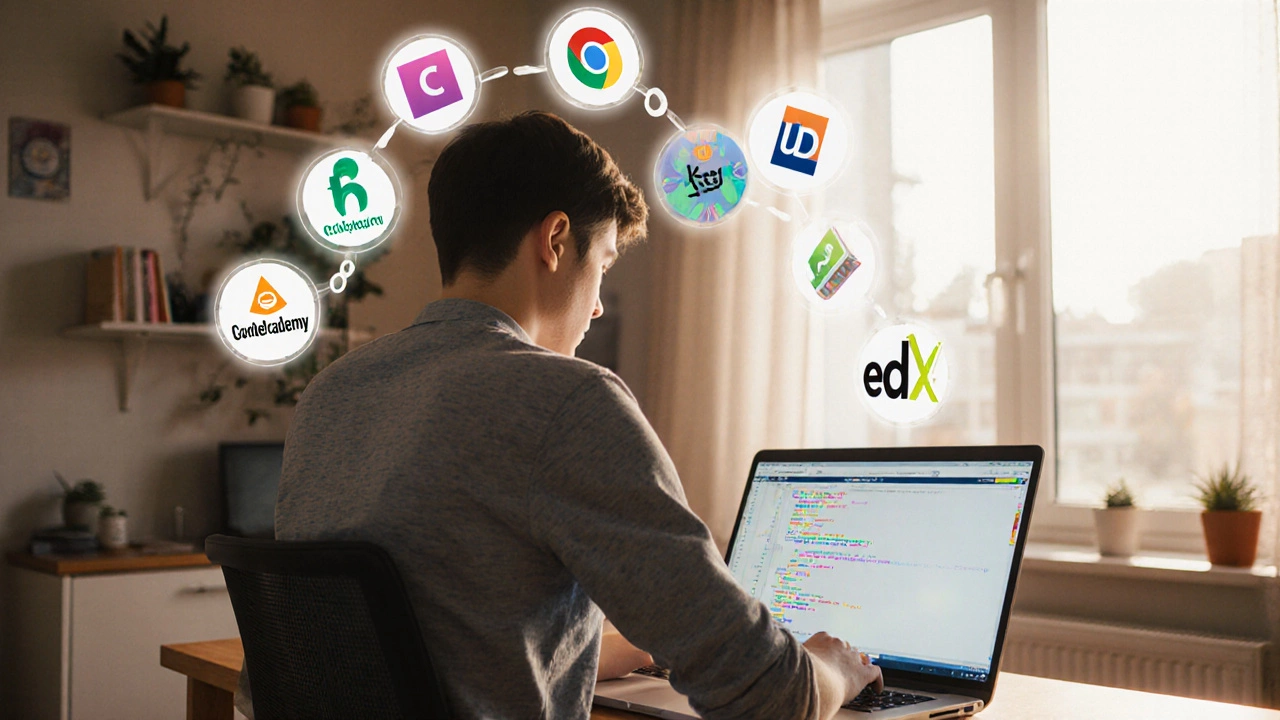Coding Platform Recommender
Tell us your preferences
Your Recommended Platform
Why this platform matches your needs
When you’re ready to start coding, coding platform is an online service that delivers interactive lessons, projects, and community support to help newcomers learn programming. With a flood of options, picking the right one feels overwhelming. This guide cuts through the noise, ranks the top platforms for 2025, and shows you how to match a service to your learning style, budget, and career goals.
What makes a coding platform beginner‑friendly?
A platform earns the “beginner‑friendly” badge when it nails three basics:
- Clear curriculum: Structured pathways that start with fundamentals and gradually introduce real‑world projects.
- Interactive feedback: Instant code checks, hints, and a sandbox that lets you experiment without breaking anything.
- Support ecosystem: Active forums, mentors, or video walkthroughs that answer questions quickly.
If a service checks these boxes, it’s likely to keep you motivated through the inevitable learning curve.
Top 7 coding platforms for absolute beginners
Below are the platforms that consistently score high on curriculum clarity, interactivity, and community support. Each entry includes a short overview, pricing snapshot, and what makes it unique.
-
Codecademy offers a hands‑on, browser‑based learning environment with bite‑size lessons that focus on immediate code execution. Its “Skill Paths” guide you from basic syntax to building a portfolio website. A free tier covers the first few chapters, while the Pro plan (US$19.99/month) unlocks quizzes, real‑world projects, and a personalized learning plan.
-
FreeCodeCamp is a non‑profit platform that teaches full‑stack web development through a series of challenges and projects. All content is free, supported by donations. You earn verified certificates after completing each major module (e.g., Responsive Web Design, JavaScript Algorithms).
-
Khan Academy provides video‑driven lessons paired with interactive coding exercises, primarily for HTML, CSS, and JavaScript. The platform is entirely free and integrates well with school curricula, making it a solid starter for younger learners.
-
Coursera partners with universities and tech companies to deliver structured courses that include graded assignments and peer‑reviewed projects. You can audit most classes for free, but certificates and graded feedback require a subscription (US$39-$79 per month).
-
Udemy hosts a marketplace of individual instructor‑created courses, many of which target beginners with step‑by‑step video tutorials. Prices vary ($10-$200), but frequent sales drop most courses to under $20.
-
SoloLearn offers mobile‑first micro‑lessons that let you practice code snippets on the go. The free tier covers core languages; a Pro subscription (US$14.99/month) adds ad‑free learning and offline access.
-
edX delivers college‑level courses from institutions like MIT and Harvard, with beginner tracks in Python, Java, and web development. Audit mode is free; verified certificates cost $50-$150 per course.
Side‑by‑side comparison
| Platform | Price (monthly) | Core Languages | Interactive IDE | Certificate | Community Size |
|---|---|---|---|---|---|
| Codecademy | Free / $19.99 Pro | Python, JavaScript, HTML/CSS, Java, SQL | Yes (in‑browser) | Pro only | 2M+ |
| FreeCodeCamp | Free | HTML, CSS, JavaScript, Python, React | Yes | Free | 5M+ |
| Khan Academy | Free | HTML, CSS, JavaScript | Yes (sandbox) | None | 1.5M+ |
| Coursera | $39-$79 | Python, Java, C++, Swift, Web stacks | Mixed (in‑browser, IDE links) | Paid | 4M+ |
| Udemy | $10-$20 (sale price) | All major languages | Video + external IDE | Paid (optional) | 3M+ |
| SoloLearn | Free / $14.99 Pro | Python, JavaScript, C++, Java, SQL | Yes (mobile IDE) | Free | 1M+ |
| edX | Free audit / $50‑$150 certificate | Python, Java, HTML/CSS, JavaScript | Mixed | Paid | 2M+ |

How to pick the right platform for you
Use this quick decision tree to narrow down the list:
- Budget matters? If you need everything for free, start with FreeCodeCamp or Khan Academy.
- Do you prefer video instruction? Udemy and Coursera excel at structured video courses.
- Want a guided learning path? Codecademy’s Skill Paths and Coursera’s Specializations keep you on track.
- Mobile‑first learning? SoloLearn’s app lets you code while commuting.
- Seeking an official certificate? Choose Codecademy Pro, Coursera, or edX.
Match your answers to the platform matrix above, and you’ll land on a service that feels like a natural fit.
Getting started: A 30‑day starter plan
No matter which platform you pick, a focused first month makes all the difference. Here’s a template you can copy‑paste into your calendar:
- Day 1‑3: Complete the platform’s introductory module (usually a “Hello World” exercise).
- Day 4‑7: Finish the first language‑specific lesson (e.g., Python basics or HTML tags).
- Day 8‑14: Build a tiny project - a personal webpage, a calculator, or a simple chatbot.
- Day 15‑21: Join the community forum, post your project, and ask for feedback.
- Day 22‑30: Tackle the platform’s first challenge quiz; earn a badge or certificate.
Stick to the schedule, and you’ll have a concrete portfolio piece by the end of the month.
Common pitfalls and how to avoid them
Beginners often stumble over three recurring traps:
- Skipping practice: Watching videos isn’t enough. Pair every lesson with a hands‑on coding exercise.
- Choosing too many languages at once: Focus on one language for at least two weeks before hopping to the next.
- Ignoring community help: Most platforms have active forums; post questions early to prevent frustration.
By staying disciplined and leveraging the community, you’ll keep momentum high.
Future‑proofing your learning journey
Technology evolves fast, but the fundamentals of problem‑solving stay the same. After you finish a beginner track, consider these next steps:
- Enroll in a mid‑level specialization (e.g., Front‑End Development on Coursera).
- Start contributing to open‑source projects on GitHub; real‑world code reviews sharpen skills.
- Pair coding with a mentor on platforms like Codecademy or through local meetups.
These moves turn “I can write code” into “I can build products.”
Frequently Asked Questions
Is it okay to learn coding for free?
Absolutely. Platforms like FreeCodeCamp, Khan Academy, and the free tier of SoloLearn provide high‑quality curricula without any cost. They’re perfect for testing the waters before you decide to invest in a paid subscription.
Which platform is best for learning Python as a complete beginner?
Codecademy’s Python Skill Path and Coursera’s “Python for Everybody” specialization are both beginner‑friendly. If you need a free option, FreeCodeCamp’s JavaScript‑first track also includes a solid Python module.
Do I need a certificate to start a junior developer job?
Certificates help, especially when you lack formal education, but most employers care more about a portfolio of projects. Build a few real‑world apps and showcase them on GitHub; that’s often more persuasive than a badge.
Can I learn multiple programming languages at the same time?
It’s possible, but beginners usually get confused. Stick to one language for at least two weeks, master its syntax, then branch out. Platforms like Codecademy let you add a second path once you finish the first.
How much time should I dedicate each week?
Consistency beats marathon sessions. Aim for 5‑7hours spread over 4‑5 days. Short daily practice keeps concepts fresh and reduces burnout.
